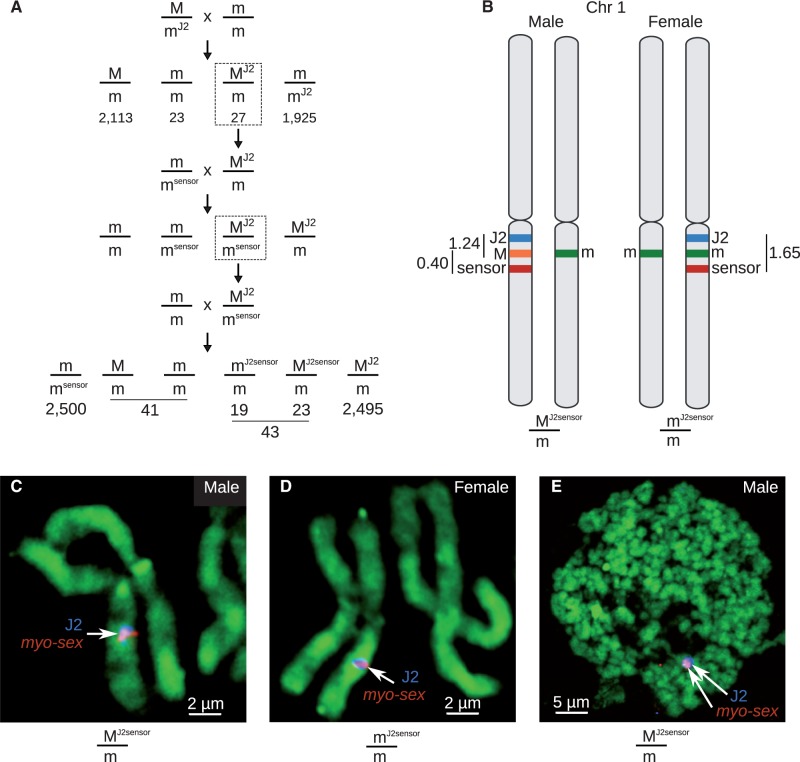Fig. 3.—
Myo-sex hybridizes to the location of the A. aegypti M-locus and can still recombine with the m-chromosome. (A) Using two transgenic strains of A. aegypti with sex-linked insertions, sensor and J2, a transgenic strain of A. aegypti was generated that has transgenes flanking the M-locus on the M-chromosome, and a separate transgenic strain was generated with the two transgenes corresponding positions on the m-chromosome. Note that one of the 43 transgenic recombinants died before we can determine its sex. (B) A representation of the relative position of the transgenes with respect to the M-locus and the m-locus. Numbers represent linkage in centimorgans. FISH on mitotic chromosomes from the khw strain of A. aegypti in males (C) and females (D) with probes for J2 and myo-sex. In (C), the blue J2 signal spans the entire presumed M-locus and the surrounding region. (E) FISH on male polytene chromosome shows that the myo-sex signal is fully within the J2 signal, indicating that myo-sex is located between the J2 and sensor transgenes. Myo-sex was present in the transgenic strain with the transgenes on the m-chromosome. When J2 recombined with the m-chromosome to generate this transgenic line, myo-sex also moved to the m-chromosome with J2 indicating that myo-sex can still recombine.

